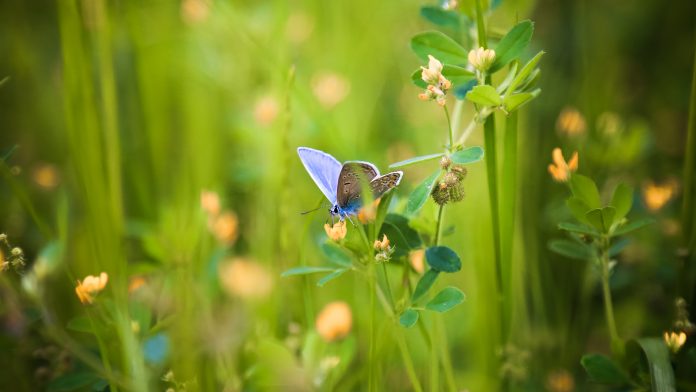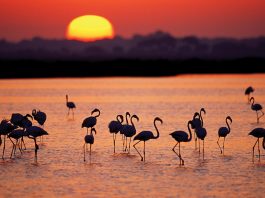Research on preventing biodiversity loss indicates that the population increase of endangered species of butterfly is largest in habitats with microclimatic variability.
A team at the Faculty of Biological and Environmental Sciences and the Helsinki Institute of Life Science of the University of Helsinki, as well as the Finnish Environment Institute have conducted the research.
Insects are frequently limited in their movement abilities; in many cases, species at specific stages in their lives are completely immobile, rendering them reliant on the temperature and moisture conditions in their immediate surroundings.
In the Åland Islands, located on the southwest coast of Finland, Glanville fritillary butterflies (Melitaea cinxia) spend around ten months of the year in the larval stage. In the middle of summer, as a group, the freshly hatched larvae eat the host plant, on whose leaf the female laid the eggs.
Previous studies have indicated that plants can wither completely in dryer summers, in these situations, only those larvae survive whose eggs have been laid on a plant growing in an extremely moist spot.
“We investigated how varying microclimates affect larval growth and survival in the spring after the overwintering. We found that warm and sunny days in March woke up the larvae and made them look for food. However, very little food was to be found, since the few warm days in early spring were followed by a cool April, with the growing season of the larval host plants only beginning in earnest in May,” commented Susu Rytteri, a doctoral researcher from the University of Helsinki’s Research Centre for Ecological Change.
The researchers noted that in hot and sunny microclimates, larvae grew quicker but also deceased in greater numbers due to food scarcity. Meanwhile, in colder and more shaded environments, larval growth was slow, an increase to the abundance of food as food plants had time to grow in sync with the nutritional requirements of the larvae.
“The growth of butterfly populations increased when larval groups were located in particularly warm spots on sunny southward slopes. At the same time, the larvae also benefited from cooler and shaded microclimates. Due to the unpredictability and variability of weather conditions, the optimal egg-laying strategy for insects would appear to be laying eggs in varying microclimates which have the capacity to protect their immobile offspring from unfavourable conditions. The problem is that habitats have declined in number and become increasingly uniform. Consequently, varying microclimates are not necessarily on offer.
“Butterflies benefit from diverse plants, and in butterfly gardens, the goal should be floral splendour stretching from early spring long into the autumn. Many garden plants are good melliferous plants, that is, plants rich in pollen and nectar, but wild meadow plants should not be overlooked either. Trees, bushes, rocks and knolls form variable microclimates and offer protection from unfavourable weather conditions,” Rytteri added.





